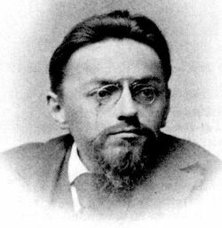Charles Proteus Steinmetz
|
|
Charles Proteus Steinmetz was a mathematician and electrical engineer. He fostered the development for alternating current that made possible the expansion of the electric power industry in the United States, formulating mathematical theories for engineers. [1] (http://www.infoplease.com/ipa/A0767088.html), [2] (http://www.invent.org/hall_of_fame/139.html)
| Contents |
Biography
Steinmetz was born in Breslau, Silesia, Germany. He studied electricity in Germany. Steinmetz adhered to the belief that electrification of societies would bring about a social revolution. He became a socialist but had to leave Germany when Bismarck began rounding up socialists. He immigrated to the United States where he eventually went to work for General Electric [3] (http://www.ge.com/en/company/companyinfo/executivebios/printable/printable_ew_rice.htm). During his tenure at Union College he produced some of his most important work. He is most noted for his developements in the feild of magnetic hysteresis. When in Schenectady, where he was living, elected a socialist president of the school board, Steinmetz began serving in the city government. In his later years Steinmetz became interested in lightning.
An interesting anecdote, as told by Charles M. Vest (President of the Massachusetts Institute of Technology)during commencement on June 4th, 1999, concerning Steinmetz recounts his mastery of electromagnetic phenomena and his engineering skills: [4] (http://web.mit.edu/newsoffice/nr/1999/vestspeech.html)
- In the early years of this century, Steinmetz was brought to General Electric's facilities in Schenectady, New York. GE had encountered a performance problem with one of their huge electrical generators and had been absolutely unable to correct it. Steinmetz, a genius in his understanding of electromagnetic phenomena, was brought in as a consultant -- not a very common occurrence in those days, as it would be now.
- Steinmetz also found the problem difficult to diagnose, but for some days he closeted himself with the generator, its engineering drawings, paper and pencil. At the end of this period, he emerged, confident that he knew how to correct the problem.
- After he departed, GE's engineers found a large "X" marked with chalk on the side of the generator casing. There also was a note instructing them to cut the casing open at that location and remove so many turns of wire from the stator. The generator would then function properly.
- And indeed it did.
- Steinmetz was asked what his fee would be. Having no idea in the world what was appropriate, he replied with the absolutely unheard of answer that his fee was $1000.
- Stunned, the GE bureaucracy then required him to submit a formally itemized invoice.
- They soon received it. It included two items:
- 1. Marking chalk "X" on side of generator: $1.
- 2. Knowing where to mark chalk "X": $999.
Charles Proteus Steinmetz is buried in Vale Cemetery, Schenectady, NY. At the time of his death, Steinmetz held over 200 patents. [5] (http://www.becklaser.de/hbeng/steinmetz.html)
Awards
- Cedergren Medal : 1914.
Publications and patents
- Steinmetz, "The Natural Period of a Transmission Line and the Frequency of lightning Discharge Therefrom". The Electrical world. August 27, 1898. Pg. 203 - 205.
- Steinmetz, "Future of Electricity".
Patents
- Steinmetz, Template:US patent, "System of distribution by alternating current". January 29, 1895.
- Steinmetz, Template:US patent, "Inductor dynamo".
- Steinmetz, Template:US patent, "Inductor dynamo".
- Steinmetz, Template:US patent, "Induction motor".
- Steinmetz, Template:US patent, "Induction motor".
- Steinmetz, Template:US patent, "Means for producing light". May 7, 1912.
- Steinmetz, Template:US patent, "Induction furnace".
- Steinmetz, Template:US patent, "Inductor dynamo".
External links
- U.S. Supreme Court, "U S EX REL STEINMETZ v. ALLEN, 192 U.S. 543 (1904) (http://laws.findlaw.com/us/192/543.html)". UNITED STATES ex rel. CHARLES P. STEINMETZ, Plff. in Err., v. FREDERICK I. ALLEN, Commissioner of Patents. No. 383. Argued January 12, 13, 1904. Decided February 23, 1904.

